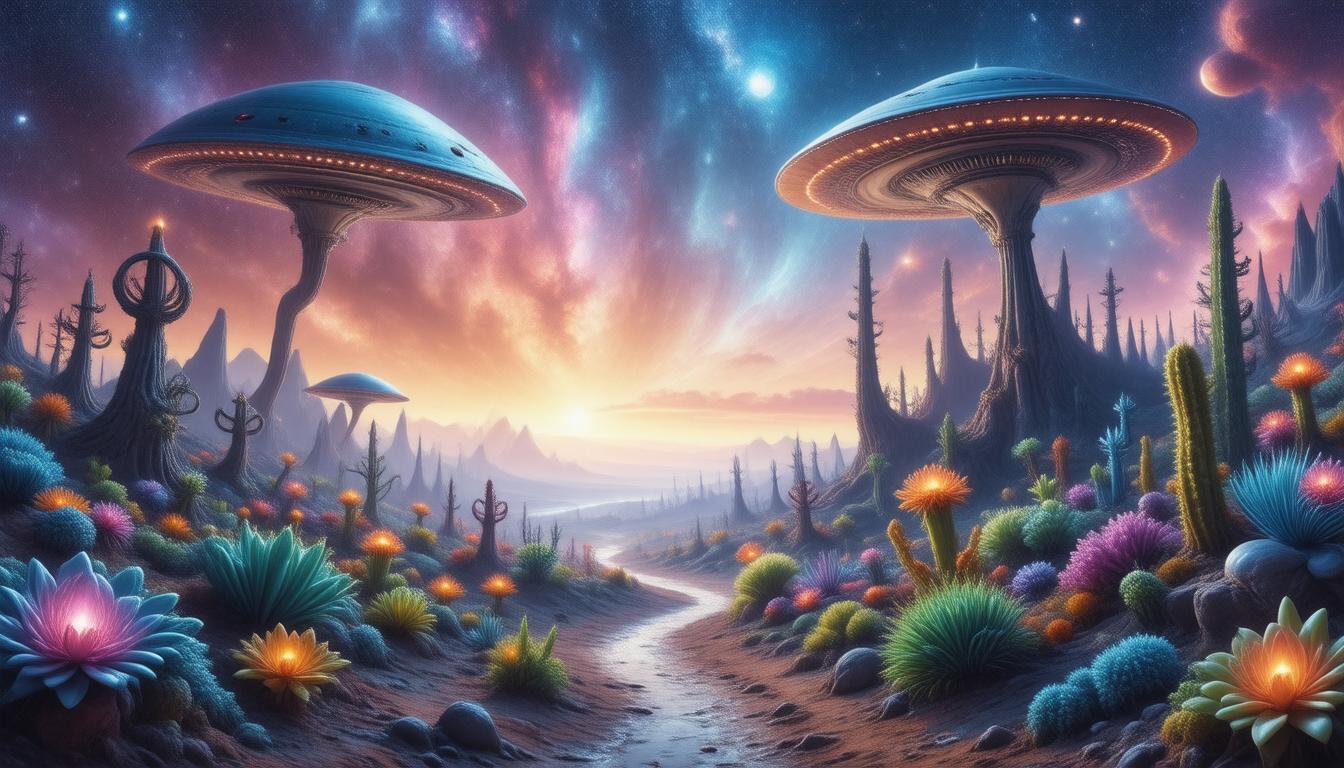The question of whether we are alone in the universe has intrigued humanity for centuries. From ancient myths of celestial visitors to modern scientific inquiries, the concept of extraterrestrial life has woven its way into our culture, prompting discussions that intersect science, philosophy, and imagination. In this article, we will delve into the historical myths about extraterrestrial beings, highlight scientific evidence that suggests the possibility of life beyond Earth, explore famous UFO sightings and their implications, and consider future prospects in the search for extraterrestrial life. Join us as we embark on this engaging exploration of a topic that continues to captivate our collective curiosity and spark our dreams of what lies beyond our planet.
Topics
- Extraterrestrial life has been a subject of fascination, leading to numerous historical myths and legends.
- Scientific evidence, including extremophiles and the discovery of exoplanets, bolsters the possibility of extraterrestrial existence.
- Famous UFO sightings have sparked controversy, igniting debates about government secrecy and public perceptions of unidentified aerial phenomena.
- The search for extraterrestrial life continues to evolve with advancements in technology and ongoing space missions.
- Future discoveries in astrobiology and astrophysics could provide profound insights into whether we are alone in the universe.
Historical Myths About Extraterrestrial Beings
Throughout history, humanity has been captivated by the possibility of extraterrestrial beings visiting Earth. Various cultures have spun tales that intertwine with their myths, folklore, and even religious beliefs, leading to the rise of numerous historical myths about extraterrestrial life. For instance, ancient astronaut theory posits that gods and celestial beings mentioned in texts like the Bible or Hindu scriptures could have been misunderstood extraterrestrial visitors. These interpretations often categorize remarkable ancient structures, such as the Pyramids of Giza or Stonehenge, as evidence of advanced knowledge or technology acquired from extraterrestrial beings. Additionally, sightings of UFOs and unexplained phenomena in the skies have fueled countless legends, transforming ordinary events into extraordinary accounts of alien encounters. Such myths, while fascinating, highlight humanity’s enduring obsession with the unknown and the potential implications of life beyond our planet.
Scientific Evidence Supporting Extraterrestrial Life
The quest for extraterrestrial life has captivated scientists and astronomers for decades, leading to a wealth of scientific evidence that supports the possibility of life beyond Earth. One of the most compelling pieces of evidence comes from the discovery of extremophiles, organisms that thrive in extreme conditions similar to those found on other planets and moons. For instance, NASA’s research on microbial life in extreme environments on Earth, such as the acidic hot springs in Yellowstone and the icy Antarctic dry valleys, suggests that life could exist in similar harsh conditions elsewhere in the solar system. Moreover, recent studies of exoplanets—planets outside our solar system—have revealed that many are located in the habitable zone where conditions might be just right for liquid water, an essential ingredient for life as we know it. Additionally, the detection of organic molecules in comets and on Mars strengthens the hypothesis of extraterrestrial life by indicating that the building blocks of life are prevalent throughout the universe. These findings, combined with advancements in technology like the James Webb Space Telescope, offer exciting prospects for discovering extraterrestrial life and understanding our place in the cosmos.
‘The important thing is not to stop questioning. Curiosity has its own reason for existing.’ – Albert Einstein
Famous UFO Sightings and Their Implications
Famous UFO sightings have captivated both the public and scientists alike, often sparking debates about the existence of extraterrestrial life. From the Roswell incident in 1947, where an unidentified object crashed in New Mexico, to the Phoenix Lights phenomenon in 1997 that baffled thousands of witnesses in Arizona, these events have stirred curiosity and speculation. What do these occurrences imply for humanity? Many researchers speculate that such sightings challenge our understanding of physics and technology, suggesting that extraterrestrial beings may possess advanced capabilities beyond our current comprehension. This raises profound questions about our place in the universe and the potential for contact with intelligent life forms. As investigations into these phenomena continue, they not only fuel public fascination but also highlight the importance of scientific inquiry into the unknown.
Future Prospects in the Search for Extraterrestrial Life
The search for extraterrestrial life has captivated scientists and enthusiasts alike for decades, leading to significant advancements in our understanding of the universe. As we look to the future, the prospects for discovering extraterrestrial life appear more promising than ever. With the launch of next-generation telescopes like the James Webb Space Telescope, researchers will have unprecedented capabilities to analyze the atmospheres of exoplanets for biosignatures—indicators of life. Additionally, missions to Mars, such as the Perseverance Rover, are providing crucial insights into the planet’s past conditions and potential habitability. Key areas of focus include the icy moons of Jupiter and Saturn, such as Europa and Enceladus, where subsurface oceans may harbor life. As technology advances and our exploration of the cosmos continues, the likelihood of finding extraterrestrial life may soon shift from science fiction to a groundbreaking scientific reality.
Improve your professional profile AND do your part to contribute and advance human civilization by becoming a member today.



